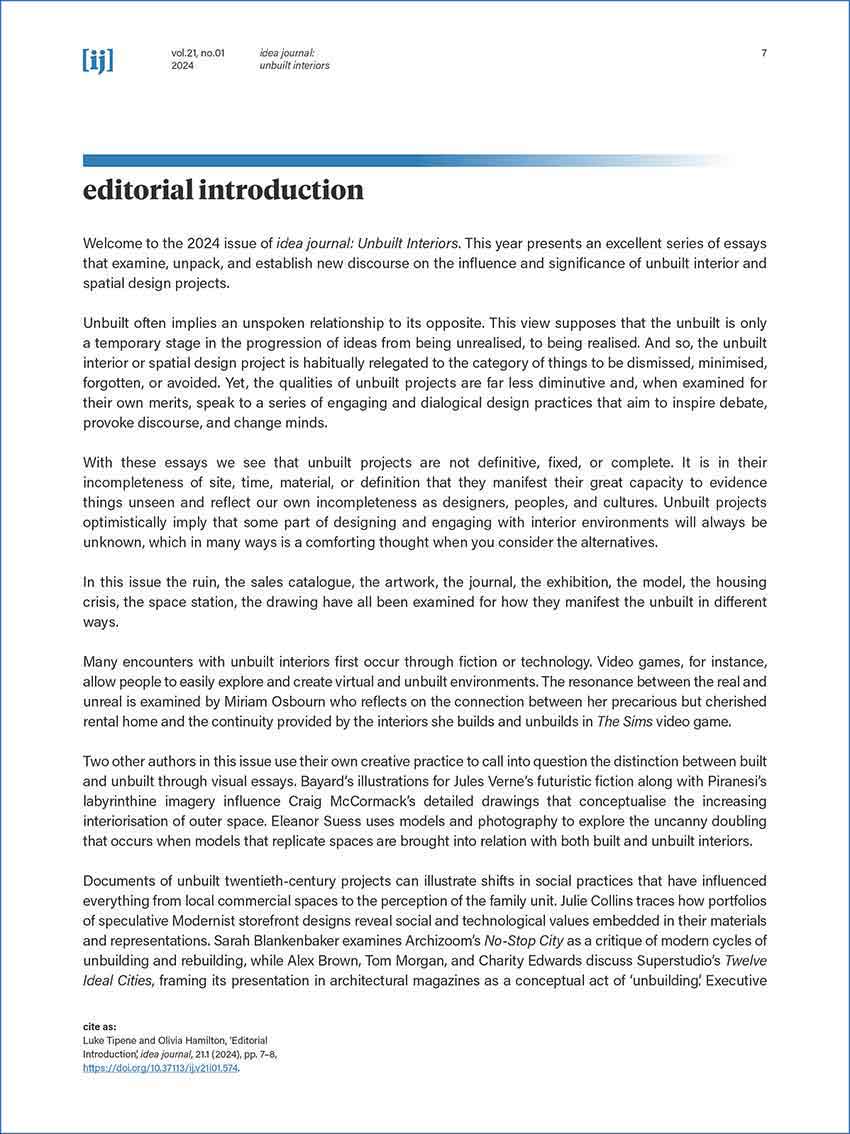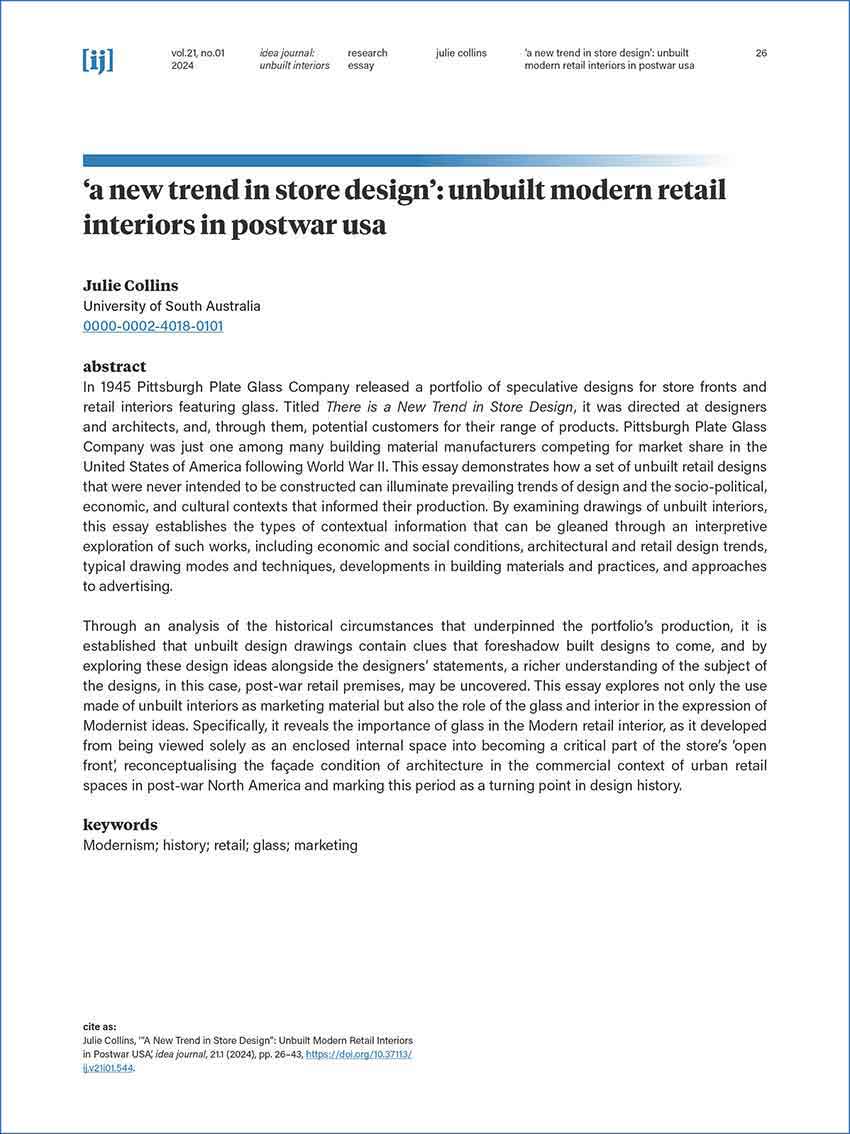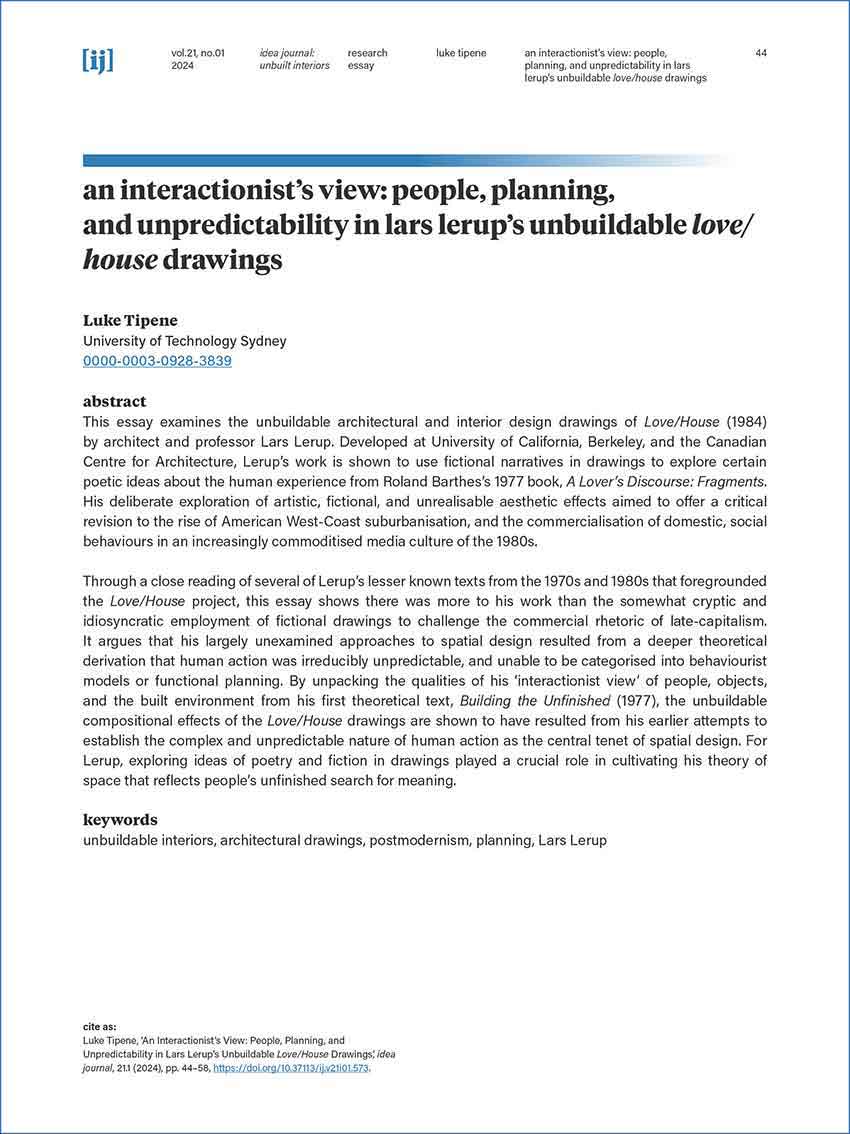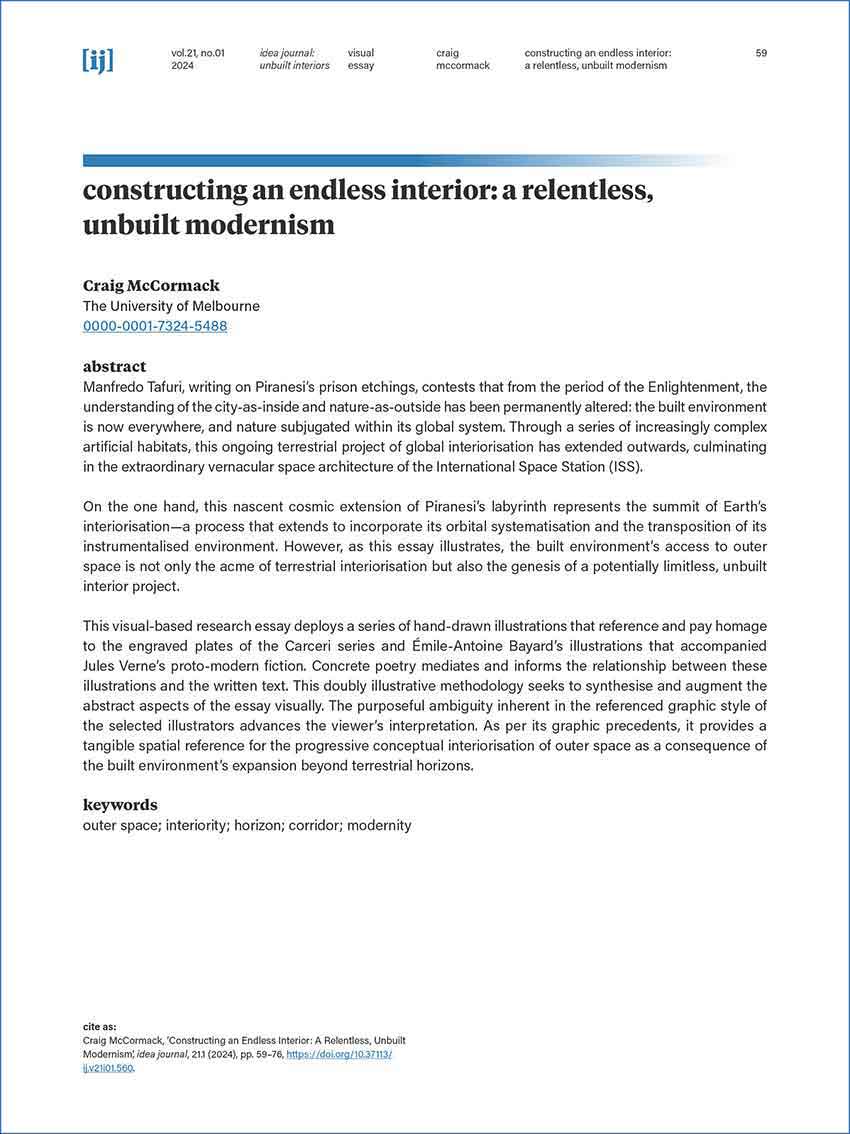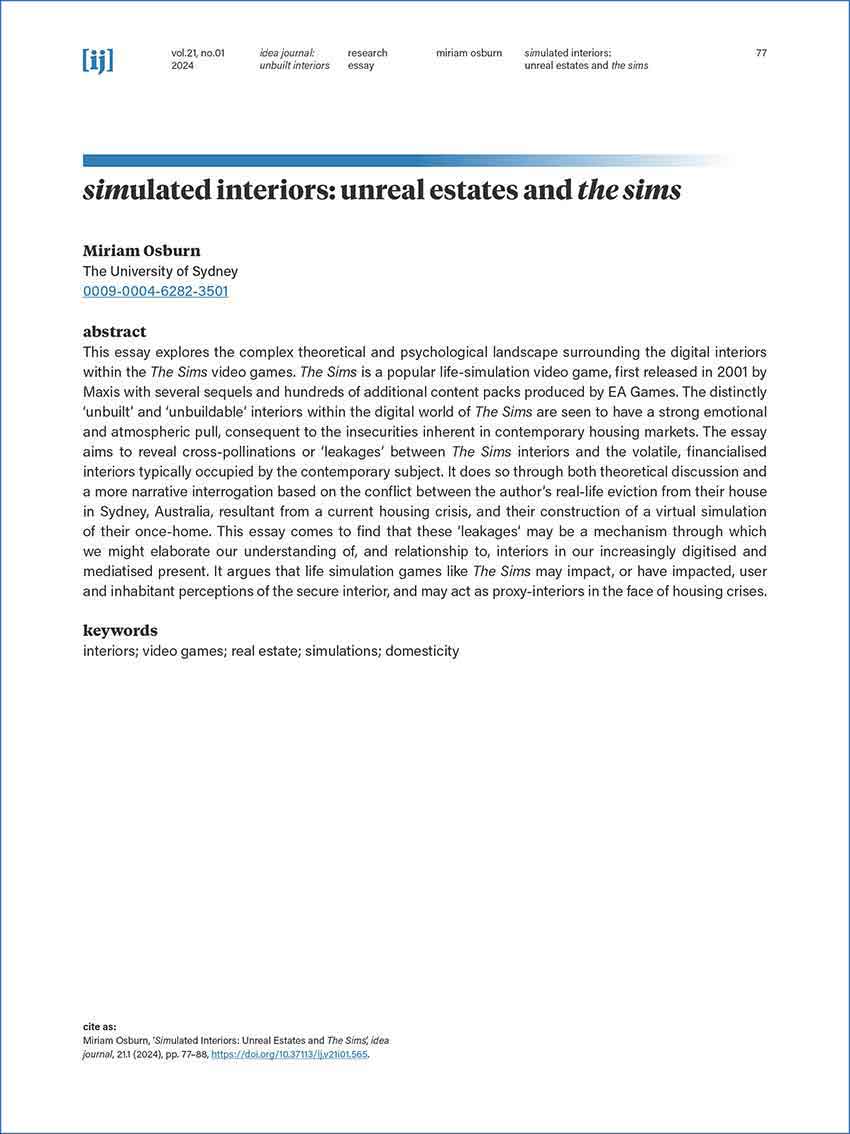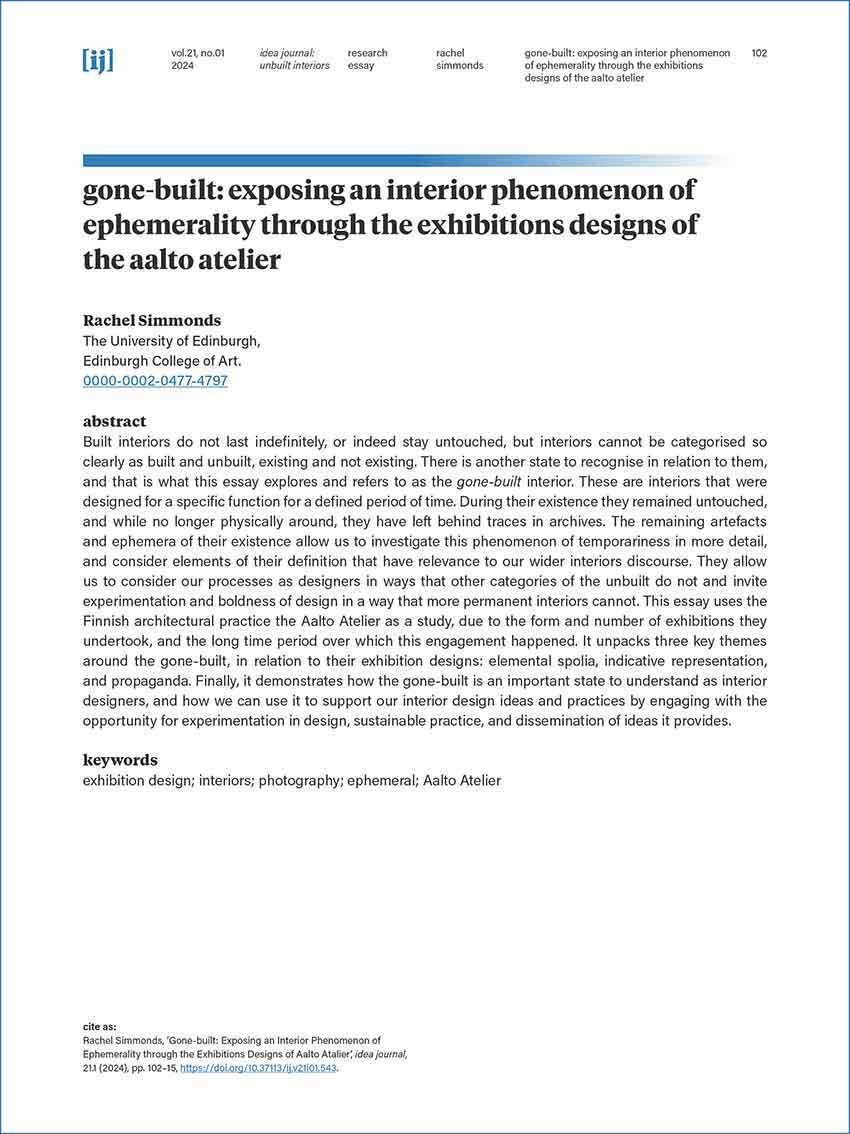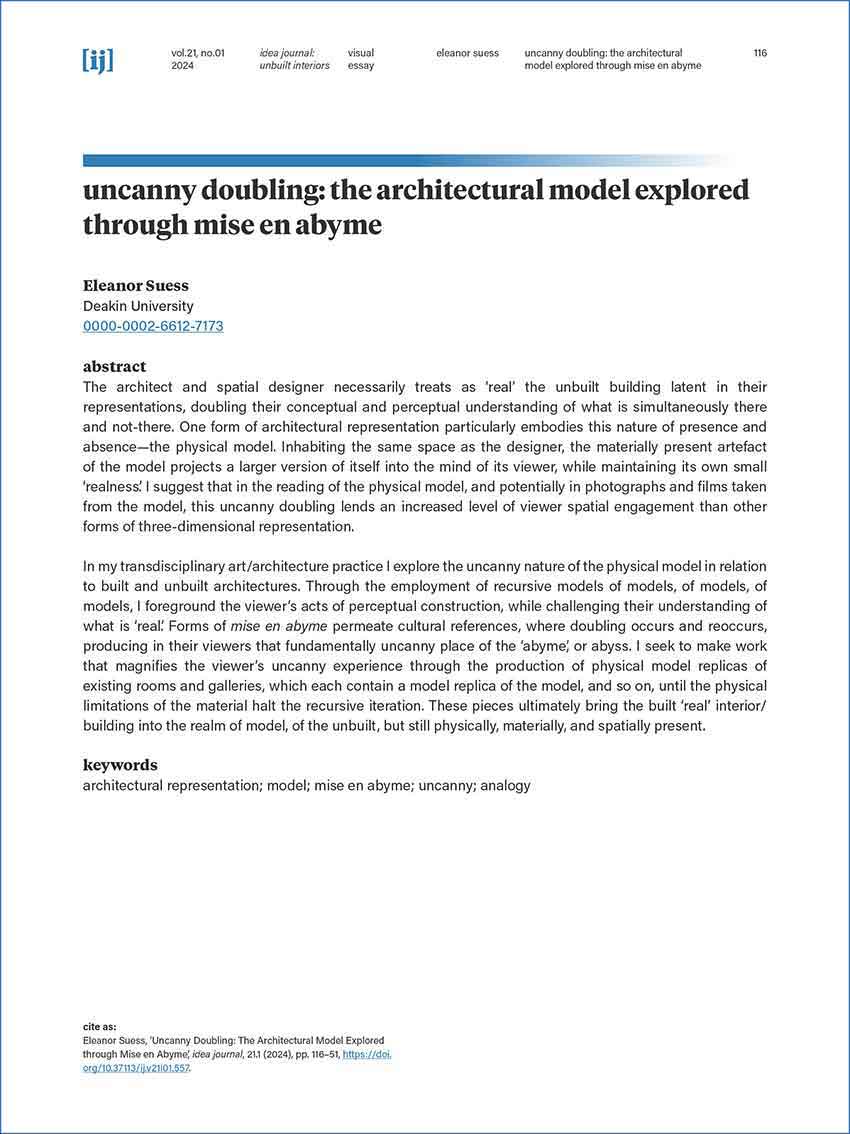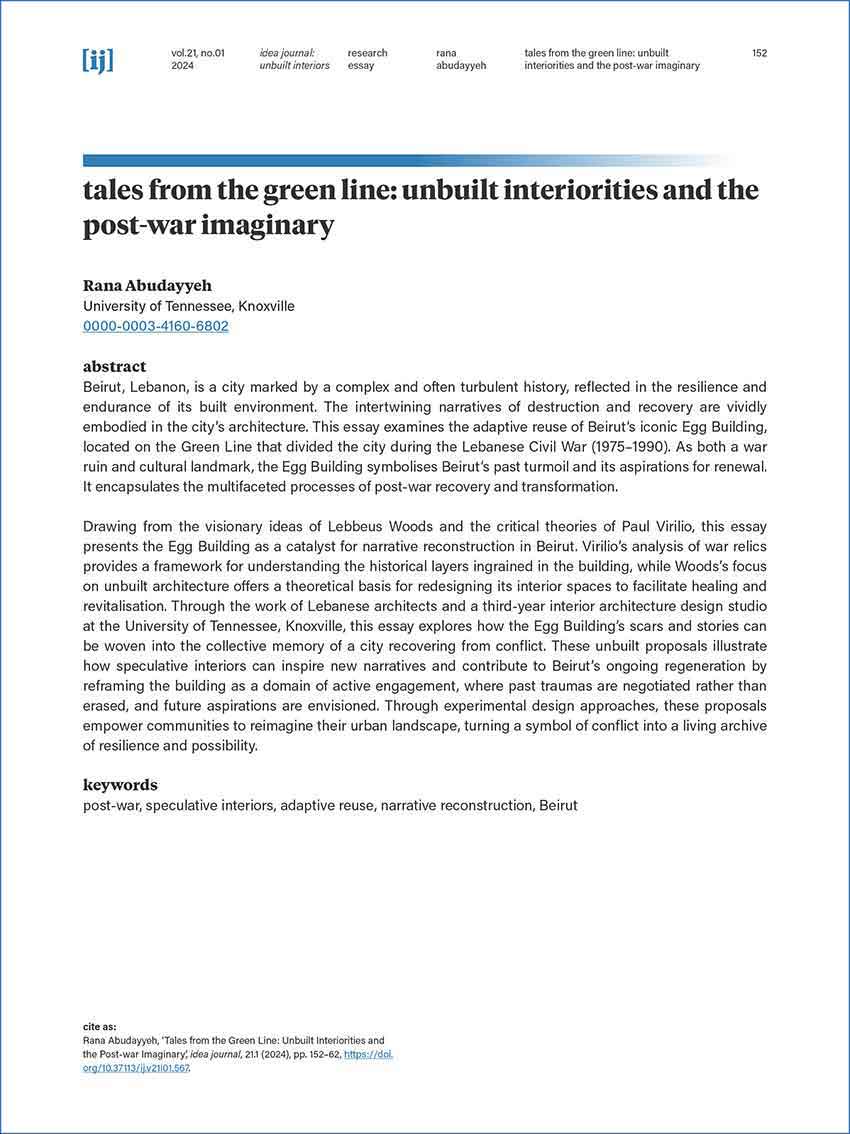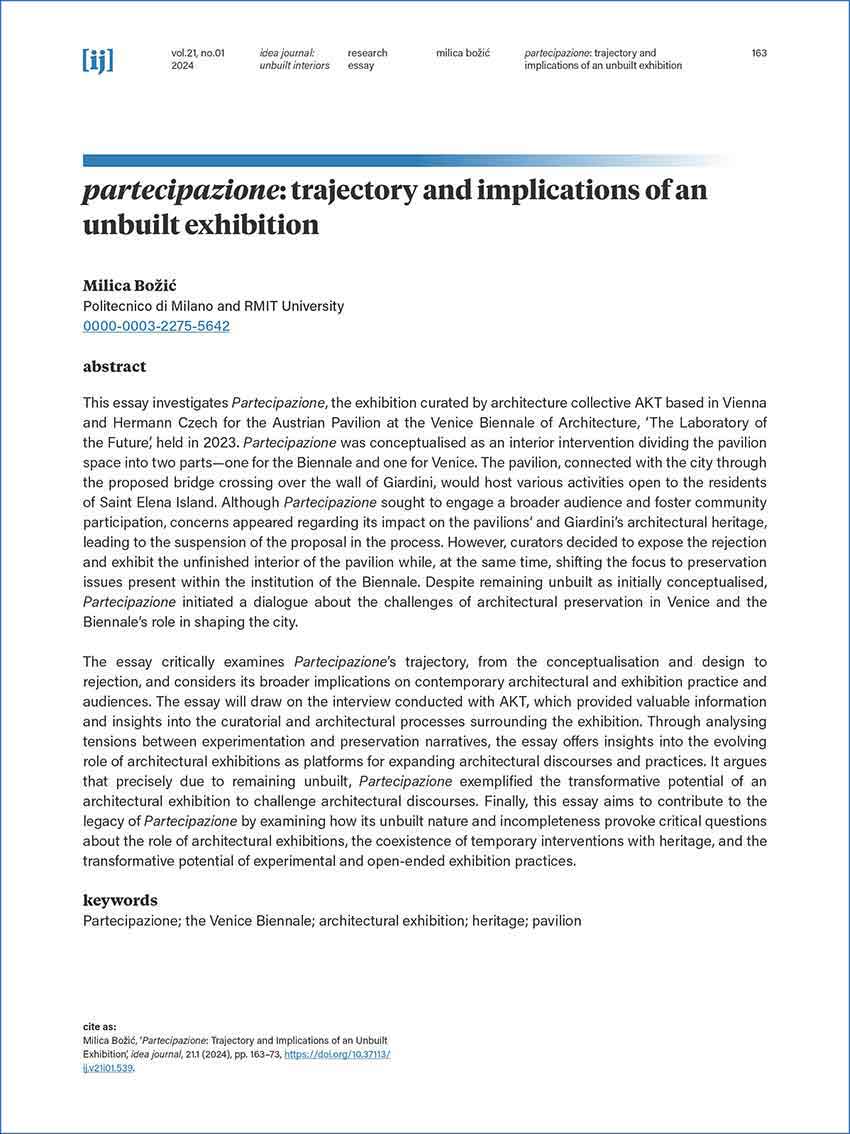In both the research and practice of spatial design, unbuilt projects are often occluded by those that eventuate in built form. Unable to deliver genuine qualities of spatial experience, the intangibility of unbuilt interiors can be relegated to the status of ‘never was’, ‘never made it’, ideas on backup hard drives, in discarded plan drawers, and ageing materials studies.
Yet, unbuilt projects frequently foreground the ideological, cultural, and political motivations that undergird their conception. Unencumbered by municipal regulations, costs, and compromises, unbuilt interiors can maintain the breathtaking ideas that are too often redacted, conceded, or simply forgotten by the time a design physically manifests.
From the interior worlds of Étienne-Louis Boullée’s Cenotaph for Isaac Newton (1784) to Superstudio’s critique of hyper-modern domesticity in Supersurface, The Happy Island, Project (1971), unbuilt interiors have the capacity to challenge existing power and political constructs by uniquely contributing unassailed opinions. Instruments of persuasion, they expand discourse on the social impacts of spatial design in ways their built compeers cannot.
Conversely, the persuasive power of unbuilt projects can be used to diminish critiques of the status quo. Hyper-realistic renders and the emergence of compelling AI imagery prime our desires to consume unbuildable images of interior luxury and grandeur. Global inflation and supply chain disruptions continue to entrench concerns about the unbuildable within aspirations of home ownership and status, impacting the values and structures of domestic occupation for those who can afford it and those who cannot.
The 2024 issue of idea journal sought contributions that explore the history, theory, practice, and futures of unbuilt interiors. In expanded discourses on the social impacts of spatial design, authors were asked to consider what role archived, artificial, and unachievable designs have on the ideological, cultural, and political contexts of their times.
DOI: https://doi.org/10.37113/ij.v21i01
Published: 27.12.2024



